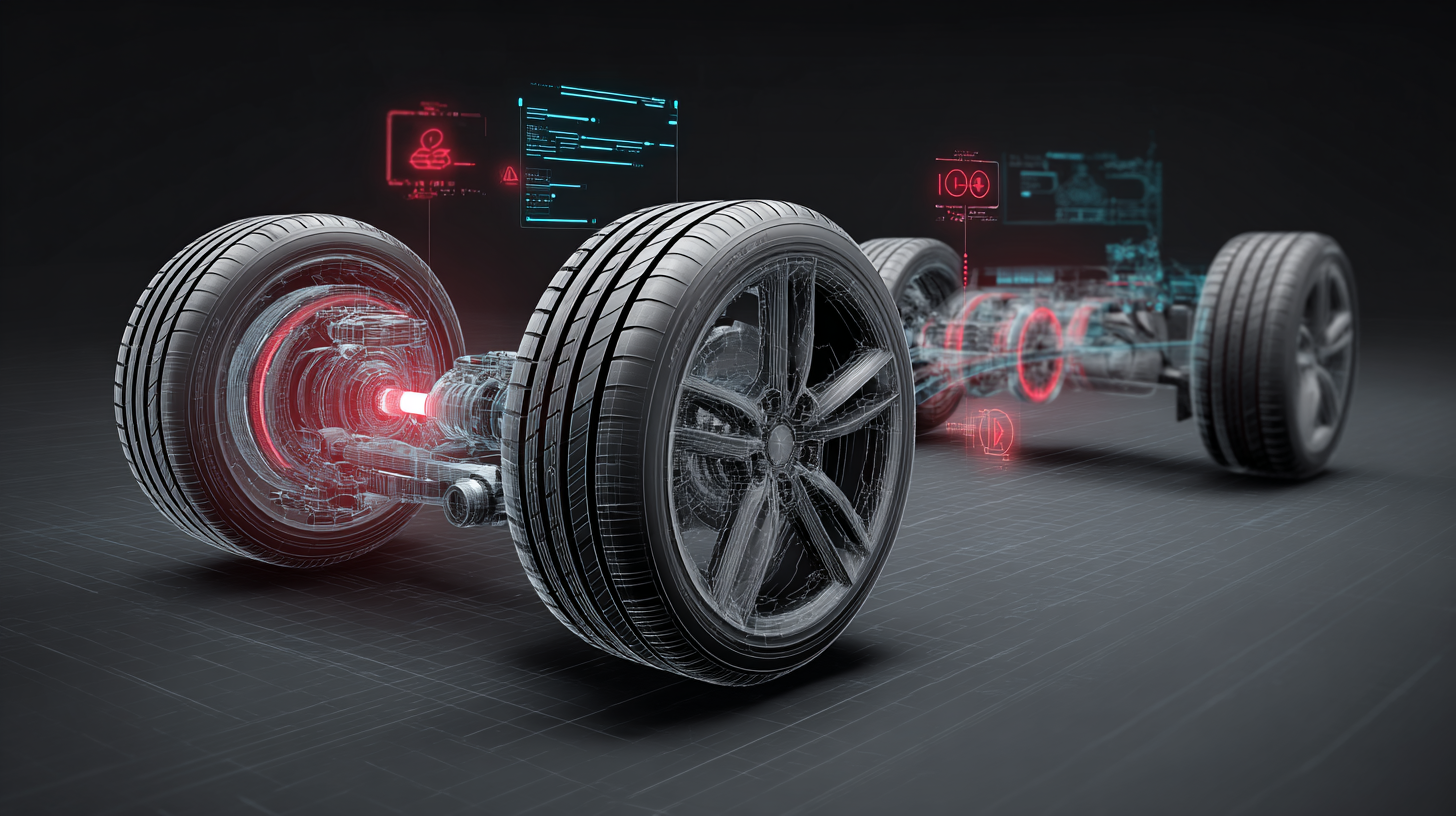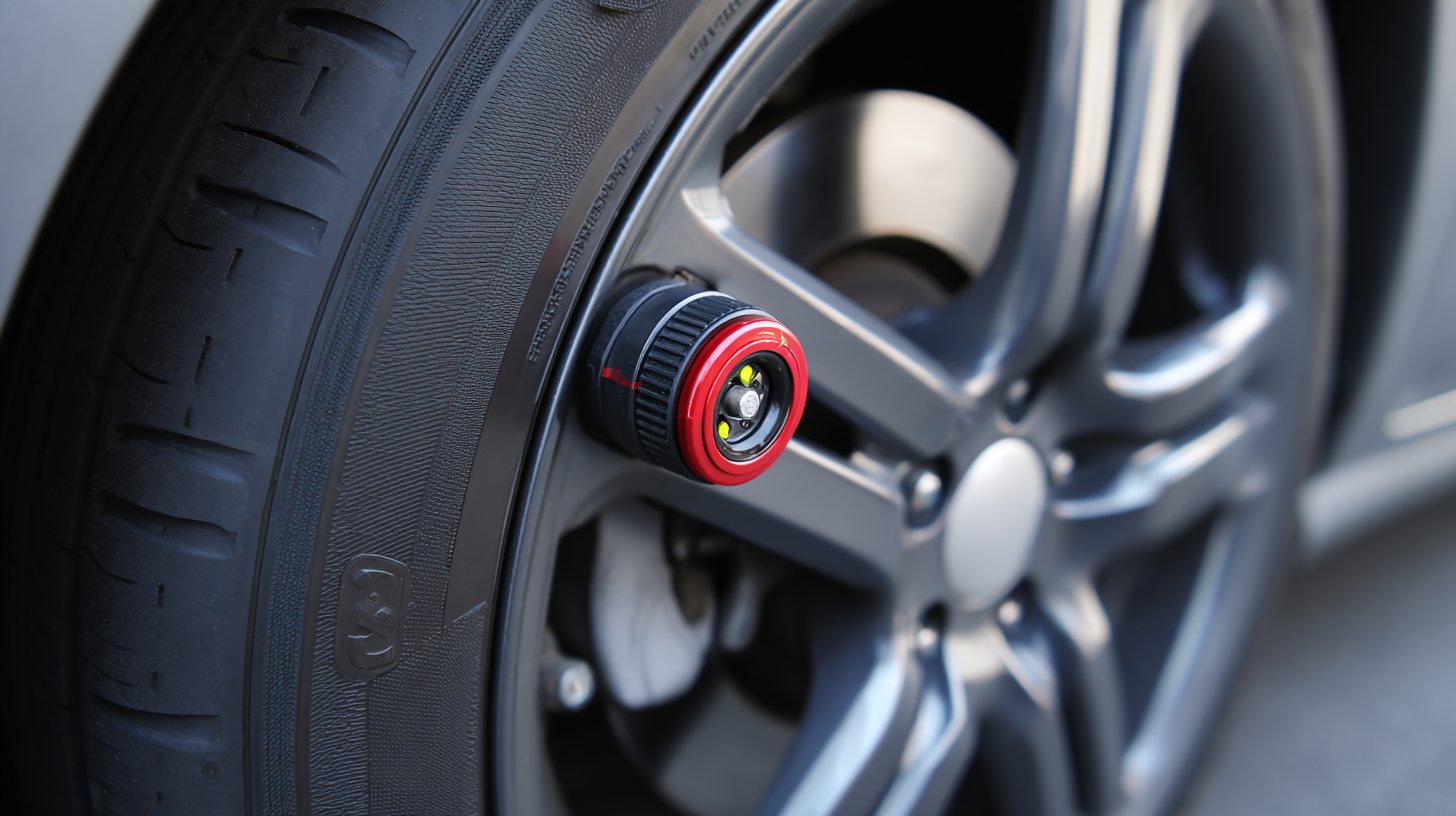Help is here
Understanding the Impact of Tire Valve Sensors on Vehicle Safety and Fuel Efficiency
 In recent years, the importance of tire valve sensors has gained significant attention in the automotive industry, primarily due to their critical role in enhancing
vehicle safety and fuel efficiency. A tire valve sensor is an advanced device that monitors tire pressure and temperature, providing
real-time data that helps drivers maintain optimal tire performance. By ensuring that tires are adequately inflated and functioning correctly, these sensors contribute to
improved fuel efficiency, reducing overall fuel consumption and CO2 emissions. Additionally, they play a vital role in vehicle safety by alerting drivers to potential tire issues,
thereby minimizing the risk of accidents caused by tire blowouts or failures. As we delve deeper into the multifaceted impacts of tire valve sensors, it becomes clear
that their integration into modern vehicles is not just a technological advancement,
but a significant step towards promoting safer and more economical driving experiences.
In recent years, the importance of tire valve sensors has gained significant attention in the automotive industry, primarily due to their critical role in enhancing
vehicle safety and fuel efficiency. A tire valve sensor is an advanced device that monitors tire pressure and temperature, providing
real-time data that helps drivers maintain optimal tire performance. By ensuring that tires are adequately inflated and functioning correctly, these sensors contribute to
improved fuel efficiency, reducing overall fuel consumption and CO2 emissions. Additionally, they play a vital role in vehicle safety by alerting drivers to potential tire issues,
thereby minimizing the risk of accidents caused by tire blowouts or failures. As we delve deeper into the multifaceted impacts of tire valve sensors, it becomes clear
that their integration into modern vehicles is not just a technological advancement,
but a significant step towards promoting safer and more economical driving experiences.
The Role of Tire Valve Sensors in Enhancing Vehicle Safety
Tire valve sensors play a crucial role in enhancing vehicle safety by providing real-time monitoring of tire pressure and temperature.
These sensors, which are often part of a Tire Pressure Monitoring System (TPMS), alert drivers to any deviations from the optimal tire conditions.
By maintaining the correct tire pressure, the sensors help prevent blowouts and improve overall vehicle control, especially during emergency maneuvers.
Additionally, properly inflated tires contribute to better traction and stability, minimizing the risk of accidents caused by tire-related issues.
Furthermore, the integration of tire valve sensors can significantly impact fuel efficiency. Under-inflated tires create greater rolling resistance, forcing the engine to work harder and consume more fuel.
By ensuring that tires are inflated to the manufacturer-recommended levels, these sensors help drivers achieve better fuel economy.
This not only leads to cost savings but also aligns with environmental sustainability goals by reducing greenhouse gas emissions associated with fuel consumption.
In this way, tire valve sensors not only enhance safety but also support efficient vehicle operation, making them an indispensable component of modern automotive technology.
How Tire Pressure Monitoring Systems Contribute to Fuel Efficiency
Tire Pressure Monitoring Systems (TPMS) play a crucial role in enhancing vehicle safety and improving fuel efficiency. By providing real-time data on tire pressure, these systems alert drivers to under-inflated tires, which can lead to increased fuel consumption and higher risks of tire blowouts. The integration of TPMS in vehicles helps maintain optimal tire pressure, thereby promoting better fuel efficiency. Research indicates that consumers are increasingly aware of the significance of tire safety, contributing to a projected growth in the TPMS market, which is estimated to reach $8.2 billion by 2024, growing at a compound annual growth rate of 11.7% through 2034.
Furthermore, the growing global emphasis on fuel efficiency has catalyzed the adoption of tire pressure monitoring technologies. As drivers become more educated on how tire conditions affect vehicle performance and fuel usage, demand for advanced TPMS solutions is expected to rise. Additionally, the semiconductor sensors market—integral to TPMS functionality—is set to experience significant growth, illustrating the interconnected nature of technology, safety, and efficiency in the automotive industry. The implementation of these systems ultimately contributes to reduced fuel costs for consumers and a lower carbon footprint, aligning with global sustainability goals.

Understanding the Technology Behind Tire Valve Sensors
Tire valve sensors, commonly known as tire pressure monitoring systems (TPMS), play a crucial role in modern vehicles by ensuring optimal tire performance. These sensors are typically installed inside the tire or on the valve stem, allowing them to monitor the tire's air pressure in real-time. When the pressure falls below the recommended level, the system alerts the driver, thereby preventing potential safety hazards such as blowouts and loss of control. This advanced technology not only enhances safety but also contributes to fuel efficiency, as correctly inflated tires reduce rolling resistance.
The technology behind tire valve sensors involves a combination of pressure sensors, wireless communication, and onboard vehicle systems. The sensors measure the air pressure continuously and transmit data wirelessly to the vehicle’s central computer system. This communication allows for immediate feedback to the driver, often through a dashboard warning light. Moreover, advancements in sensor technology have led to improved accuracy and reliability, with some models now being able to detect temperature changes as well. As the automotive industry continues to evolve, tire valve sensors have become an essential component in promoting safety and efficiency on the road.
Impact of Tire Valve Sensors on Vehicle Safety and Fuel Efficiency
Key Benefits of Regular Maintenance for Tire Valve Sensors
Regular maintenance of tire valve sensors is essential for ensuring vehicle safety and enhancing fuel efficiency. Tire valve sensors play a crucial role in monitoring tire pressure, alerting drivers to any significant deviations that could indicate a potential problem. When these sensors are well-maintained, they can effectively prevent tire blowouts and improve overall vehicle handling. As a result, proper maintenance can significantly reduce the risk of accidents, making it a vital aspect of vehicle care.
Tips for maintaining tire valve sensors include regularly checking the tire pressure, especially before long trips. This helps to ensure that the sensors are functioning correctly and that your tires are at optimal pressure for fuel efficiency. Additionally, it is important to inspect the sensors for any signs of damage or corrosion during routine tire rotations. Replacing damaged sensors promptly not only enhances safety but also contributes to better fuel economy by ensuring your tires wear evenly.
Another key aspect of maintenance is recalibrating the sensors after any tire changes or rotations. Ensuring that the sensors are properly calibrated will help in providing accurate readings, which is crucial for both safety and performance. Regularly scheduled maintenance checks by a professional can further identify any underlying issues with the sensor system before they become significant problems. By prioritizing the upkeep of tire valve sensors, drivers can enjoy a safer and more efficient driving experience.
Real-World Impact: Case Studies on Vehicles with Tire Valve Sensors
The incorporation of tire valve sensors has had a significant impact on both vehicle safety and fuel efficiency, as evidenced by several compelling case studies. In one notable instance, a fleet of delivery vehicles equipped with tire pressure monitoring systems (TPMS) reported a substantial reduction in tire-related incidents. By maintaining optimal tire pressure, these vehicles not only decreased their risk of blowouts but also enhanced overall driving stability. The real-time data provided by tire valve sensors enabled fleet operators to promptly address pressure issues, ensuring that drivers could focus on their routes without the distraction of potential mechanical failures.
Another case study highlighted a family of cars that integrated tire valve sensors into their regular maintenance routines. Car owners experienced an 8% improvement in fuel efficiency over several months. This enhancement stemmed from the sensors’ capability to alert drivers to under-inflated tires, which can lead to increased rolling resistance and higher fuel consumption. By addressing inflation issues early, these vehicles operated more efficiently, ultimately leading to reduced carbon emissions and lower fuel costs for the owners. Such practical applications underscore the importance of tire valve sensors in modern automotive technology, illustrating their role in promoting safer and more economical driving experiences.

